Making Tyre Testing Easier
- By Sharad Matade & Juili Eklahare
- February 13, 2023
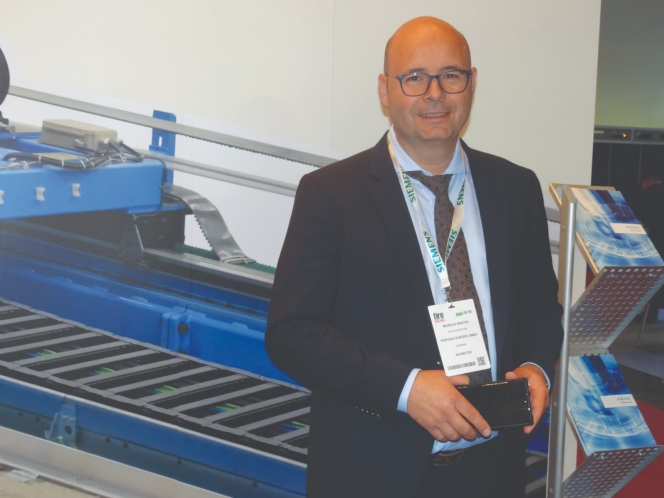
Where would our vehicles be if their tyres weren’t appropriately tested? Well, probably not in the best or safest condition. While it’s thanks to testing companies, it’s no less thanks to testing solutions and equipment manufacturers, too. The latter’s accuracy and reliability make the former’s job easier, making our tyres safer and more efficient as vehicle wheels. In a tete-a-tete with Tyre Trends, Markus Winter, Director – Sales and Marketing, Kokusai Europe GmbH, a leading test and measurement solutions manufacturer founded in Tokyo, Japan, threw light on testing strategies, the need for indoor tyre testing, the company’s plan to establish itself in Europe and more. Read on…
Kokusai began as a sales company for dynamic balancing equipment and has since grown to become a major supplier in the Japanese and Asian industries. The test and solutions manufacturer really started with the balancing of electronical components, which was a huge business about 30 to 40 years ago. It is still a business of Kokusai’s, of course – the balancing of smaller part vans, electrical motors etc.
However, while transitioning to test and measurement (for the tyre industry in particular), it was testing for automotive parts. “And when it comes to automotive parts, it is the tyres, other rotary parts, shafts and drive shafts etc,” Markus Winter, Director – Sales and Marketing, Kokusai, told us. “So it was clear that in an encapsulated market, you start with everything that rotates. And therefore, Kokusai started with all the automotive components, and then tyres and wheels. In fact, we are the leading supplier in Asia. Moreover, we have expanded to the United States with a subsidiary 30 years ago. Plus, we expanded to Europe about five years ago,” he said.
Kokusai’s presence in Europe
In truth, Kokusai is available around the world but is just establishing itself in Europe more and more, which is part of the global strategy. “We do have a lot of very unique testing solutions that are not available in other markets. This is because other markets develop from Asia into Europe,” Winter pointed out.
Kokusai’s equipment
Speaking of interesting testing solutions, Winter asserted that they have tyre performance and tyre wear testing equipment, where they are just leading the market with the innovative ideas that Kokusai has developed.
“For example, for tyre performance testing, we have some competition from the United States and Europe,” Winter explained. “However, we have developed, for instance, an indoor 50-metre flat testing equipment to test tyre performance parameters – the machine named FLATROAD TESTER. And this, in fact, is the test bench with the highest repeatability that is available in the market. As for Kokusai, we have a solution where we accelerate the traversing carriage with a single tyre. We can manipulate all parameters in real-time during the movement and record the measured performance values.”
Winter further went on to throw light on testing the performance of a tyre on FLATROAD TESTER. He cited, “Our mechanical system is like a high-speed linear axis – it is computer controlled and has the precision of a Japanese CNC machine.”
“Hence, we can control all the parameters on the tyre in such a precise way that it’s not like driving a car and pressing the brake. We are exactly controlling the movement and rotation of the tyre. So it is more precise – it’s like having a CNC machine doing the testing,” Winter explained.
“There is another point that makes this kind of indoor testing more reliable,” Winter continued. “Using our indoor test bench, all the outer surrounding conditions affecting the measurement are significantly reduced. Hence, we can do the testing, and the results we measure are the real tyre behaviour between the tyre and the road, without any influence of weather, the driver skills or driving behaviour, car suspension or pavement. It is such a massively built machine equipment that one can be really assured of avoiding all the external factors and focus on the effects between the tyre and the road.”
Surrounding atmospheres affecting the testing
While it is an excellent circumstance to be able to focus completely on the parameters between the tyre and the road, it’s always safer to be aware of the external factors that might come in the way.
“Those are mainly humidity and temperature,” Winter told us. “If you’re doing outdoor testing, starting early in the morning and the sun shining on the pavement, you have a pavement temperature of maybe 15 degrees. If you’re doing breaking tests, it will really affect the results. Additionally, if there’s higher humidity, then there’s a little bit more of sliding that takes place.”
“Of course, you can conduct very long tests over a span of many days,” he further highlighted. “Hence, if you conduct the outdoor testing for a few weeks and also use reference tyres, then you can compensate a lot.”
“In fact, one can put on one tyre on our measurement machine and run it three times, and the measurement curves will be overlapping perfectly three times. That would be the final result,” Winter put across.
More knowledge, better tyres
Outdoor testing brought us to the subject of tracks. This is when Winter informed us that Kokusai has analysed tracks. The complete 50 metres installed in the machine are divided into exchangeable segments.
Winter pointed out that they can use individual road segments with different surface characteristics in the area where they are doing the test. “We can look into factors such as what kind of friction do we want to have, what kind of macro structure do we need, do we want to have the stepping from a high friction value to a low friction value and so on,” he shared. “Thus, we can manipulate all the surfaces, do the testing and then see the effect.”
However, outdoor testing can be complicated, and sometimes they need to test on different standard asphalt pavements, tiles, water floating etc. “In such scenarios, we can exchange the pavement segments at our tester and do another test, which is much easier,” Winter explained. “Moreover, with the knowledge of these small changes – which even the tyres will go through from one test to another – the tyre development engineers will have more detailed information in order to take better steps in the development of the tyre. This is because the repeatability of our processes is so high. Of course, if you have an outdoor process, you can conduct a certain number of tests and do an average. But if your sigma is already that high, you don’t know if you’re developing into the right direction.”
Good or bad tyre?
While every aspect of testing is taken care of by the testing companies themselves, we know that customer demands are changing every day. If we consider a tyre, there are two different departments that Kokusai is serving. “One is tyre testing,” Winter put across. “When it comes to tyre testing, it involves the results for tyre engineering, tyre development, performance testing, wet grip testing, wear testing and so on. This is in order to meet regulations, or to even just develop the best tyres.”
The second part of the Kokusai production is the final finished testing. “This involves the end-of-the-line testing,” Winter further explained. “This is dynamic balance testing, uniformity testing and geometrical testing. However, we’re not doing X-ray. But we’re specialised in dynamic balancing, uniformity and the geometrical measurement. So companies do expect a low cycle time because they want to test as many tyres as possible. In addition, the testing equipment should not be the bottleneck for tyre production.”
Of course, stating the obvious, Winter told us that testing companies and tyre companies need high accuracy and repeatability. This is because only when they have very high accuracy on the testing equipment that they can make calls on whether the tyre is an okay tyre or if it needs to be rejected or downgraded etc.
“A tyre is not always good or bad – it is graded, and only the best tyres are available for the OEMs,” he pointed out. “As for the others, they might be available for the aftermarket, while some go through refinishing in order to get them to a better rate. A very accurate equipment allows the tyre manufacturer to do a very precise grading, which saves costs. And it is better to invest a little more in the precise grading technology than to scrap the tyre or to put it back into the process.”
Tyre wear test
No matter how, tyre testing goes beyond this. Here, we came to discuss tyre wear testing. Winter told us that a standard outdoor tyre wear test entails driving a couple of cars in convoy on selected routes in public road traffic.
“You have a representative circuit in a region with low traffic volume and stable weather forecast. The route needs to fit the logistics, such as hotels for the staff, a workshop, test equipment and so on,” Winter said.
He added, “Now you will drive the test tyres and a reference tyre in a convoy around the track in both directions and change the tyres and the drivers in a certain order. After a mileage of about 25,000 kilometres, you can well identify the wear results and the mass loss of the tyre.”
“This always takes a number of cars, and you have to do a high mileage on driving,” Winter further explained. “Normally, one can say that each kilometre driven on the car comes to about EUR 1 – that’s what we are calculating, including the driver.”
The cost of testing
While many discuss the cost of testing equipment, everybody also has to take the cost of tyre testing, along with the time, into consideration.
“That’s because you first need the tyre test, and then the results from that tyre test, in order to continue with your development,” Winter expounded. “So if you want to make a 25,000-kilometre test to see how a tyre is wearing over a certain distance, you have to conduct the test. The test takes one month, and once you have the results, you can move on to the next step. Therefore, there’s a waiting period of one month.”
Testing strategy for final finish
Nevertheless, is every tyre that we see out there tested at the end of the production process? That depends on the testing strategy of every respective company. Winter emphasised that normally one can say that newcomers or smaller companies are trying to test at least 100 percent for OEM tyres and may conduct some statistical testing for aftermarket tyres. The processes of the really well-known tyre manufacturers are so good that they can reduce to statistical testing. Therefore, it’s just a question of how good the process and the process in tyre building are.
“On the other hand, there are a lot of companies that are still in the learning curve or are cautious about getting some tyres rejected,” Winter said. “These companies are conducting 100 percent testing. But one can say that the very old, established tyre plants, from Continental to Michelin, are doing a lot of statistical testing.”
Staying together while far apart
Yet, tyre testing does not stop at the grading or the testing process. It becomes pivotal for testing equipment manufacturers to make sure that their solutions and equipment are aligned with the current and upcoming regulations of the tyre industry. For this, Kokusai has its sales and application colleagues around the world.
Winter shared, “Our colleagues in America have their network and talk with all the big tyre manufacturers, the government, and attend various conferences to get a feel for what is happening in the market. Our Chinese and Japanese colleagues, too, are doing the same.”
“So we have a high number of offices and manufacturing plants around the world and in all the very important areas,” he further highlighted. “We have a direct network and contact with them. Hence, that’s one of our advantages. Internally, we are putting all this information together to see where there’s an overlap. For example, I have discussions with our European contacts that I meet at site or conferences. And I ask them their views on aspects. My colleagues in the US and Asia do the same and forward their feedback. Hence, it is local networking on one side and then getting the information together again on the other side in order to concentrate that internally. So it’s a big task.”
With Kokusai’s large number of offices and manufacturing plants across the globe, and moreover, all of them being highly connected with one another, the company uses this connection to be flexible with its suppliers as well.
“As we have a manufacturing plant in Japan, Korea, China and the US, if there’s a bottleneck somewhere, we try to get the same components from suppliers that are normally supplying to our other plants,” Winter commented. “To boot, we are looking for some components from Europe and the United States as well. Hence, there are different local purchasing organisations that we have within our group, and if they need to help one another, then our supply chain is quite well organised for that.”
More on Europe
While Winter mentioned that Kokusai has sales and application colleagues around the world, that is also one of the reasons why the company is pushing for the European market. Its manufacturing plant in Europe is in the planning phase.
“Although we think that the basic technology is developed in Japan, this is the heart of our engineering,” Winter put across. “Besides, the localisation and customisation are made where the customers are located and where they have their specifications, their needs and even need their technical support, which is why we are going to develop the main system in Japan.”
“As you know, China wants that certain percentage of the equipment to be built on the site,” Winter further remarked. “And it’s the same in the United States as well. Thus, we are pre-manufacturing the systems in Japan, sending them over to the United States and then making the final assembly, with all the specific American needs, on site. We will be doing the same in Europe in order to compete better against our local competitors in Europe.”
Also, while the test and measurement manufacturer is looking to establish itself in Europe, Asia happens to be its focus right now.
“I’m personally targeting the European market,” Winter told us. “Having been working for the tyre industry for many years, I’m just spreading out the network to get Kokusai well known in the continent by talking to the right people and getting the right enquiries. On top of that, I’m talking about the very interesting future projects for the new labelling topics, new testing devices, testing concepts and more.”
On these lines, Kokusai hasn’t been left behind in terms of aftersales services either. With all of its local offices and manufacturing plants proving to be a great strength, the company has engineers and a team for setting up its machines and servicing them.
“We’re actually building this up for Europe with our partner; we have gone for an established partner, as we would not be building up a complete company with all the service structures and everything else from scratch,” Winter explained.
Investment in technology
Kokusai certainly has big plans for Europe. But at the same time, as mentioned by Winter earlier, the basic technology is developed in Japan. And that is the heart of the company’s engineering. In fact, Winter claims that he is very happy that Kokusai started investigating on its technology over the years.
“Kokusai has invested so much money in its own engineering over the last years that it has its own testing centre just to make the application development. In truth, we are the only company within the tyre testing equipment manufacturers to do so,” Winter shared. “Additionally, we have a new 1,200-square metre testing facility in the Greater Tokyo Area; we are inviting customers to bring their tyres and parts, and we are developing the applications with them. I think this is very unique around the world.”
Furthermore, Winter cited that during the period of the pandemic, the company made Teams presentations with video systems and presented the equipment in China and Japan, along with doing conferences. “Our customers were so happy that we were even able to show them this kind of equipment and make tests on their tyres just through web meetings.”
Also, Kokusai provides new testing concepts, where some of the systems are still being developed. However, the test and measurement solutions manufacturer already offers to start making all the tests with tyre companies’ tyres and develop their customised application.
The need for indoor testing
While Kokusai’s plants and offices across the world stay linked in order to keep up with regulations and be on the same page in general as a group, there are no standards at the moment for the very technical specification of the equipment themselves.
“The European Union is just developing the standards for wear testing. And they are, in fact, developing the standards for outdoor driving,” Winter explicated. “However, we will need indoor testing in the future. The tyre engineers will especially need it because they will want to have the results in a couple of days and not months. Therefore, there is a need for the development area and the future regulations to also focus on indoor drum testing.”
One leap at a time
Kokusai is clearly spreading its wings gradually, not just by expanding geographically but even by enhancing itself by really investing in engineering and development. It is one of the few major players in testing equipment and invests tremendously in further building up itself.
MAXAM To Showcase Agritech Innovations At Agritechnica 2025
- By TT News
- November 05, 2025
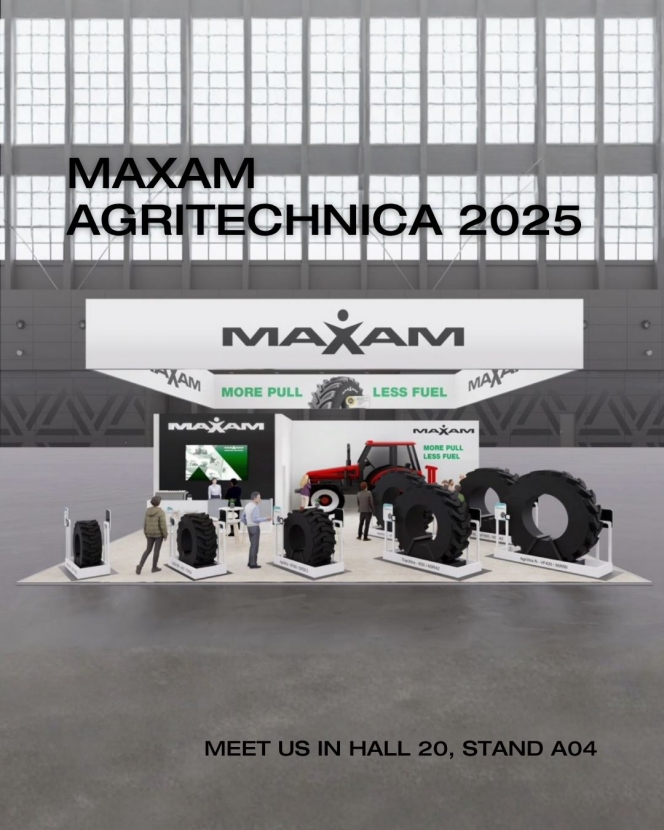
MAXAM is set to showcase its advanced agricultural tyre solutions at Agritechnica 2025 in Hannover from 9 to 15 November. Visitors can find the company at Stand A04 in Hall 20, where the exhibition theme ‘More Pull. Less Fuel’ will guide the presentation. This philosophy underscores the company's dedication to developing tyres that enhance operational efficiency and contribute to more sustainable farming practices by reducing fuel consumption and soil compaction. The event provides a significant opportunity for MAXAM to demonstrate its commitment to innovation and the expansion of its product portfolio.
On display will be a range of DLG-awarded tyres, including robust models for high-horsepower tractors and versatile options for specialised implements, illustrating the company's technical breadth. Beyond presenting products, MAXAM considers the trade fair a vital meeting point for industry collaboration. It serves as a platform for direct engagement with farmers, partners and machine manufacturers, whose feedback provides invaluable, real-world insights that directly influence the future direction of product and service development, ensuring they remain precisely aligned with evolving market needs.
As a part of SAILUN Group, one of the 10 largest tyre manufacturers in the world, MAXAM leverages its extensive international presence and collaborative research initiatives to drive continuous innovation. The company is dedicated to advancing agricultural tyre technology, creating sophisticated solutions that directly address the evolving demands of modern farming. This focus encompasses critical areas such as enhanced sustainability, improved cost-efficiency and superior field performance.
Radar Tires Expands Us Footprint With Two New Distribution Centres
- By TT News
- November 05, 2025
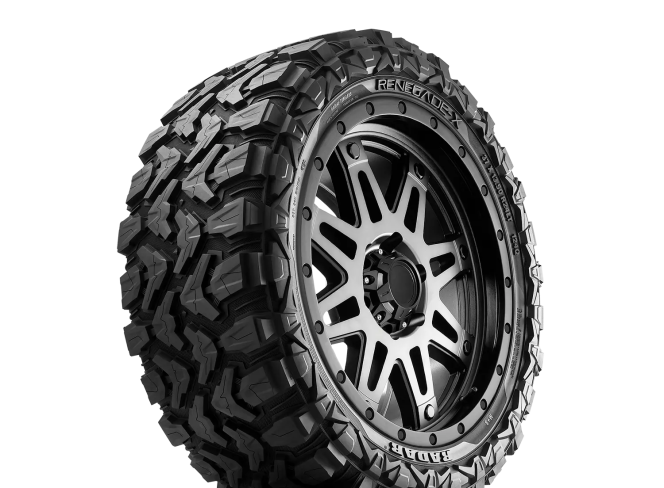
Radar Tires has expanded its US distribution network with the opening of two new domestic distribution centres in Knoxville, Tennessee, and Parkesburg, Pennsylvania, as part of efforts to strengthen product accessibility and service reliability for its growing customer base.
The expansion increases the brand’s domestic distribution centres from one to three. It aims to improve delivery efficiency and inventory availability across key regions, particularly in the Southeast and Northeast of the United States.
“Stocking domestic tyre inventory is a key part of the Radar strategy going forward,” said Rob Montasser, Vice President of Sales for Radar Tires, USA. “It ensures our distributors and retailers have easy access to the products that their customers need, without the long lead times or supply chain uncertainty. These new locations allow us to be faster, more flexible, and more dependable.”
The company said the additional facilities will reduce delivery times and ensure that its core product range remains readily available to meet rising market demand.
With existing operations in Texas, the addition of centres in Tennessee and Pennsylvania underscores Radar Tires’ long-term strategy to enhance supply chain responsiveness and reinforce its position as one of the most customer-focused distribution networks in the tyre industry.
Cabot Corp Posts Lower Quarterly Profit, Sees Subdued Demand Outlook For Fiscal 2026
- By TT News
- November 05, 2025

Cabot Corporation reported lower quarterly earnings, as weaker demand in its Reinforcement Materials segment and softer volumes in Performance Chemicals weighed on results. However, the company ended fiscal 2025 with solid cash flow and continued shareholder returns.
For the fourth quarter ended 30 September, Cabot posted net income of USD 43 million, or USD 0.79 per share, compared with USD 137 million, or USD 2.43 per share, in the same period a year earlier.
Full-year diluted earnings per share were USD 6.02, while adjusted earnings per share rose 3 percent year-on-year to USD 7.25.
“I am very pleased with another strong year of Adjusted EPS growth where we achieved USD 7.25, up 3 percent year over year, in a year with a challenging macroeconomic backdrop,” said Sean Keohane, Cabot’s President and Chief Executive Officer. “This performance was driven by higher EBIT in our Performance Chemicals segment, which increased 18 percent year over year, partially offset by EBIT in our Reinforcement Materials segment, which declined 5 percent.”
Cabot’s revenue for the quarter fell to USD 899 million from USD 1.0 billion a year earlier, while full-year sales declined to USD 3.7 billion from USD 4.0 billion.
The Boston-based speciality chemicals manufacturer said fourth-quarter cash flow from operations totalled USD 219 million, enabling USD 64 million in shareholder returns through dividends and share buybacks. For the full fiscal year, Cabot generated USD 665 million in operating cash flow, funding USD 274 million in capital investments, USD 96 million in dividend payments and USD 168 million in share repurchases.
Keohane said the company’s balance sheet remained strong, with a net debt-to-EBITDA ratio of 1.2 times, providing flexibility to invest in growth while continuing to return capital to shareholders.
The company’s Reinforcement Materials segment reported a USD 4 million decline in EBIT from the prior-year quarter, reflecting lower volumes in the Americas and Asia Pacific, partly offset by cost efficiencies. Global volumes fell 5 percent, including a 7 percent drop in the Americas, where lower tyre production by customers was attributed to increased Asian tyre imports.
Performance Chemicals EBIT decreased USD 2 million year-over-year, mainly due to a 5 percent drop in volumes led by weaker demand in Europe, particularly from construction-related applications.
Cabot ended the quarter with percent 258 million in cash and spent percent 64 million on capital expenditures. The company recorded a 55 percent effective tax rate in the fourth quarter and an operating tax rate of 27 percent for fiscal 2025.
Looking ahead, Keohane cautioned that market conditions remain challenging, particularly in the Reinforcement Materials sector. “We do not yet see signs of improvement in the external environment, particularly as it relates to regional demand trends in Reinforcement Materials due to the impact of elevated Asian tire imports into western regions,” he said.
The company anticipates improvement in Performance Chemicals, led by growth in battery materials and infrastructure-related applications, while maintaining strong cash flow to support investment and shareholder returns.
“While market conditions remain challenging, we continue to execute on our foundation of commercial and operational excellence, and we remain focused on managing costs, strengthening operations, and positioning the company for long-term growth,” Keohane said.
In fiscal 2025, Cabot also announced an agreement to acquire Bridgestone Corporation’s reinforcing carbons plant in Mexico and released its 2024 Sustainability Report, noting it had achieved 11 of its 15 sustainability goals ahead of schedule and established new 2030 targets.
wdk Hails 'Berlin Declaration' As Vital For German Industry And Jobs
- By TT News
- November 05, 2025
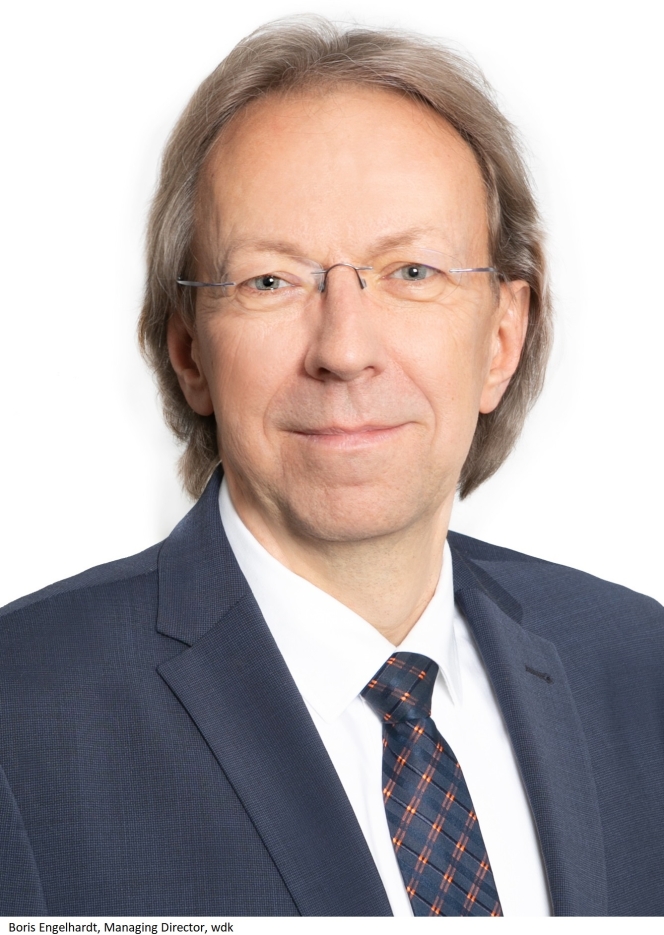
The German Rubber Industry Association (wdk) has responded positively to the 'Berlin Declaration’, characterising it as an essential and long-awaited political signal. From the wdk's perspective, the declaration represents a crucial commitment from the ‘Friends of Industry’ to bolster the manufacturing sector, which is fundamental to preserving Germany's industrial core and the multitude of upstream and downstream jobs it sustains. The association's Managing Director, Boris Engelhardt, emphasised that this initiative correctly identifies the urgent need for Europe to recognise and champion industrial value creation.
The wdk finds it particularly significant that the impetus for this declaration originated from a coalition of 17 member states, a fact that underscores a shared political priority independent of the EU Commission's agenda. While the declaration's broad framework allows for various interpretations, the wdk has identified the reduction of bureaucratic burdens as its paramount objective. On this specific point, the association reports being in complete alignment with Federal Minister for Economic Affairs Katherina Reiche. The wdk now asserts that the true measure of the declaration's success will lie in its translation from a political statement into actionable policy, urging the addressed EU institutions to move beyond acknowledgment and proceed with swift and decisive implementation.


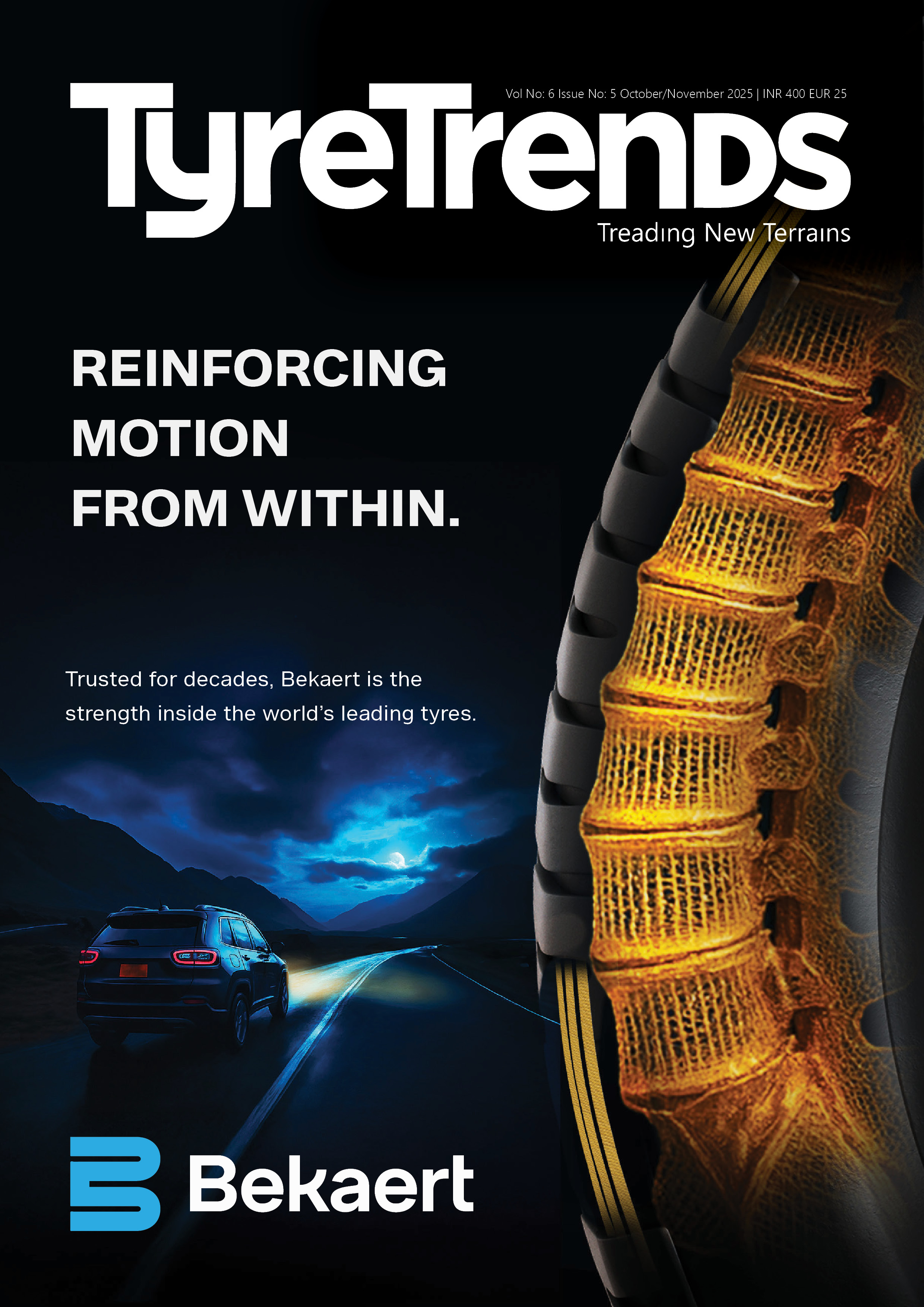
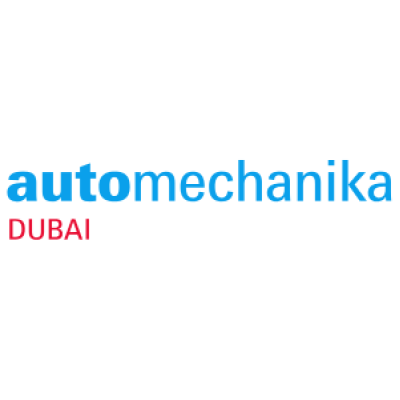

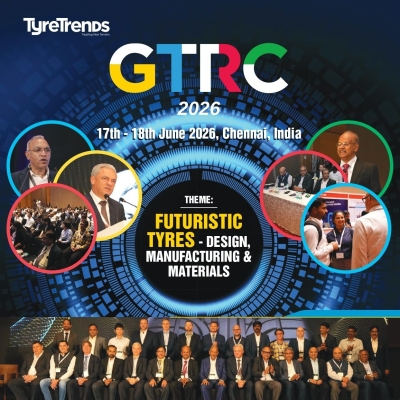
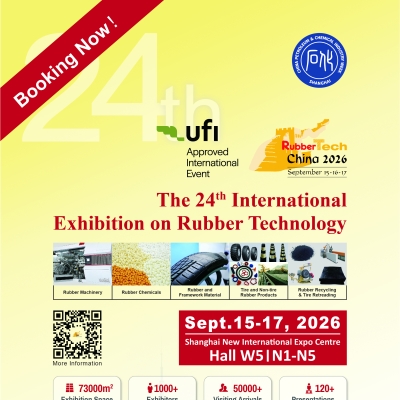
Comments (0)
ADD COMMENT